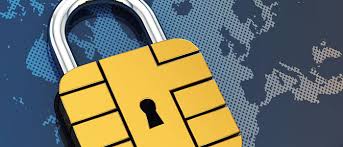 Who do you trust? Rant on. A long WSJ article details how trusting people can be and why robocall scams work. A woman listened to a voice mail message saying that it was the FBI and that her identity had been stolen. (That was the first and only robo-dialed call). When they spoke, the caller told her to turn over all savings, further telling her not to tell anyone about his step-by-step instructions as to where to move the money, nearly $340,000. Why did this 60-something oncology nurse listen to this caller over a several-day period? Why did she agree to stay in a hotel for two days while the money was in motion?
Who do you trust? Rant on. A long WSJ article details how trusting people can be and why robocall scams work. A woman listened to a voice mail message saying that it was the FBI and that her identity had been stolen. (That was the first and only robo-dialed call). When they spoke, the caller told her to turn over all savings, further telling her not to tell anyone about his step-by-step instructions as to where to move the money, nearly $340,000. Why did this 60-something oncology nurse listen to this caller over a several-day period? Why did she agree to stay in a hotel for two days while the money was in motion?
The Journal article title misleads. “Robocall Scams Exist Because They Work”. No, actually, WSJ headlines work even if the article is about something else. That something else was a character sketch of a spectacularly naïve and vulnerable woman. Why did she never tell any family member, including her husband, about it until the money was gone? According to the article, it was because of a psychological phenomenon -- a ‘habitual reliance on people in authority.’
Something is worrisome about this – it’s the reporting. Note that the median loss in a robocall scam is $700. The amount of robocall fraud is dropping – but the number of reported imposter fraud calls is growing – 46,000 reported in May. But even with that statistic, this particular case is a spectacular outlier, not an indicator of growth of either robocall or imposter scams. Consider the amount, the time and steps involved, the secrecy she agreed to, all at the behest of someone who said he was from the FBI. Shame on the Wall Street Journal for positioning this poor vulnerable, albeit highly educated person with terrible judgement as an example of why robocall scams work. Rant off.
from Tips For Aging In Place https://www.ageinplacetech.com/blog/older-adults-deserve-more-media-when-it-comes-scams
 LeadingAge in San Diego and more. Entrepreneurs clearly see the opportunity for providing tech-enabled services to help care for older adults. Large events like Leading Age, Argentum, and sub-events within CES and HIMSS all point to the business potential that draws startups as well as new offerings from existing players – in what may become an increasingly crowded market. Here five recent announcements, two from the Startup Garage at Leading Age in San Diego -- adding three others from recent press releases. All information is drawn from the websites of the companies themselves.
LeadingAge in San Diego and more. Entrepreneurs clearly see the opportunity for providing tech-enabled services to help care for older adults. Large events like Leading Age, Argentum, and sub-events within CES and HIMSS all point to the business potential that draws startups as well as new offerings from existing players – in what may become an increasingly crowded market. Here five recent announcements, two from the Startup Garage at Leading Age in San Diego -- adding three others from recent press releases. All information is drawn from the websites of the companies themselves. Medication non-adherence – it’s serious. This medication non-adherence (not filling prescriptions or missing dosages) is a
Medication non-adherence – it’s serious. This medication non-adherence (not filling prescriptions or missing dosages) is a  October was a long and extravagant month for the tech market. Between trade events, including the
October was a long and extravagant month for the tech market. Between trade events, including the